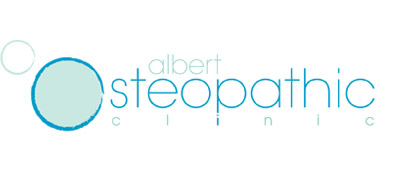
WHAT IS OSTEOPATHY ?
Osteopathy is a primary healthcare system, complementary to other medical practices.
Osteopaths primarily work through the neuro-musculo-skeletal system, mostly on muscles and joints, and pay special attention to how the internal organs affect, and are affected by that system. Relevant psychological and social factors also form part of the diagnosis.
Osteopaths consider each person as an individual. Utilising a highly developed sense of touch, they identify problem areas of the body. Using gentle stretching and mobilising techniques as well as manipulating joints, an osteopath works with the body to create the perfect conditions to facilitate the healing process.
Treatment usually consists of a combination of soft-tissue releasing techniques, and some specific adjustments affecting joints and soft-tissues (muscles, tendons and ligaments).
When the body is balanced and working efficiently, just like a well-tuned engine, wear and tear will be kept to a minimum, leaving more energy for living.
WHO IS IT FOR ?
It is suitable for almost anyone and can contribute to alleviating an enormous range of conditions in children, pregnant women, the elderly, shop, office and manual workers, professionals, dancers and sports people.
Osteopathy can help relieve both chronic and minor problems. It can provide one-off relief from pain and dysfunction or contribute to the management of long-term discomforts. Patients suffering from such conditions as joint pain; muscular aches, pains, strains and pulls; long-standing injuries; upper and lower back pain; frozen shoulders; tennis elbow; stiffness and tension; asthma; period pain; repetitive strain injury; respiratory problems; sciatica; arthritis; headache and migraine; mobility problems; problems and staying well during pregnancy; child development and illness; sports injuries and sports training enhancement will benefit from osteopathic treatment.
WHAT TO EXPECT ?
Osteopaths treat the whole person so at the first consultation a full medical case history will be taken. An examination will be carried out (you may be asked to remove some clothing for this) and you may then be asked to perform a few simple movements so the osteopath can assess the problem.
The osteopath will use their highly developed sense of touch called palpation to assess areas of weakness, tenderness, restriction or strain within your body.
The osteopath will make a diagnosis and discuss it with you and if osteopathic treatment is suitable it will be offered to you.
Osteopaths usually start any treatment by releasing and relaxing muscles and stretching stiff joints, using gentle massage techniques, rhythmic joint movements and muscle release techniques. The osteopath may also carry out manipulation using short, quick movements to joints. Other osteopathic techniques may also be used depending on your problem.
Treatments usually vary between an hour for a new patient and up to half an hour for a continuation patient, and on average between 2 to 6 sessions are required. Many patients decide that they would like to have periodic preventative treatments to avoid recurring problems.